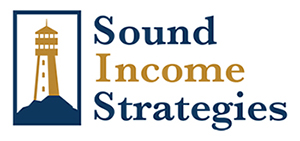Since many Americans are able to enjoy more years in retirement, it’s imperative for those approaching retirement age to establish reliable streams of income they can count on to cover their living expenses. That’s the aim of investing for income—having enough income, on a consistent basis, that allows your clients to cover their expenses, so they can avoid dipping into the principal balance of their retirement savings.
The National Retirement Risk Index (NRRI) published by the Boston College Center for Retirement Research shows approximately 50% of retirees in 2021 are at risk of being unable to maintain their pre-retirement standard of living in retirement.[1]
According to data gathered in 2017 and compiled in 2018 by the US Census Bureau, the average retirement income for Americans over the age of 65 was $67,238, or $5,603 per month. In 2019, the average monthly retirement income from Social Security was $1,470, according to the Center on Budget and Policy Priorities. That’s just $17,640 per year in Social Security benefits.[2]
As you can see, there’s quite a difference between the average income from Social Security and the average overall retirement income for Americans over the age of 65. That’s because Social Security was never intended to be the sole provider of income for retirees; it was designed to be one piece of the three-legged stool comprised of Social Security, a pension, and individual retirement savings.
With pensions being a rarity these days, that means most Americans must now take it upon themselves to maximize their retirement savings. Further, taxes, unpredictable investment returns, rising healthcare costs, and inflation can significantly erode the value of a retirement nest egg. You don’t want your clients to run out of money prematurely, so you need a plan to help them make their nest egg last as long as possible.
Investing for income seems straightforward until you are faced with a simple question: How do you actually generate a monthly income with investments? Things can become challenging. Examples of investing income sources include dividend-paying stocks and bonds.
Dividend-Paying Stocks. Companies that pay dividends pay a portion of annual profit to shareholders based on the number of shares they hold. Dividends can provide a steady stream of income. They tend to grow over time, as the part of a company’s earnings not paid out as a current dividend is often reinvested to make future dividends bigger.
Most advisors don’t have the time or resources to select individual stocks. It takes time to dig into why a stock’s dividend yield is high. Research must be done on a company’s entire financial picture to understand the dividend.
That is why many advisors and investors invest in ETFs. Sound Income Strategies offers the Sound Equity Income ETF (SDEI), which is designed to generate current income via a dividend yield that is targeted to be at least two times that of the S&P 500 Index. SDEI seeks to achieve its investment objective by investing in common stock issued by dividend-paying, mid- and large-capitalization companies. SDEI is actively managed by a team that has been providing income-generating solutions to clients for 20 years.
Bonds. Bonds are often considered an important source of retirement income. They can partially insulate from risks of market downturns and inflation and interest rate spikes.
There are many choices when it comes to bonds. You can own government bonds, municipal bonds, corporate bonds, etc. When purchasing bonds, you need to consider its duration, interest payment, the creditworthiness of the issuer, etc.
Many advisors and investors invest in a diversified fixed income portfolio through ETFs. Sound Income Strategies offers the Sound Enhanced Fixed Income ETF (SDEF). The ETF’s primary objective is to deliver current income, while providing the opportunity for capital appreciation by investing in fixed income securities.
The ETF invests in a combination of investment grade and high yield bonds. Typically, the ETF will have an approximate equal weighting of investment grade and high yield debt securities; however, the portfolio weighting will be adjusted from time to time. The team uses a fundamental, “bottom-up” approach to analyzing individual debt securities.
Investing for income can be challenging, so it is wise to select the right investments. Sound Income Strategies’ ETFs were developed specifically for those planning for or in retirement. These ETFs can play a valuable role with potential to preserve capital and generate ongoing income. A properly managed, income-oriented, portfolio can successfully seek to deliver a successful, sustainable retirement.
IMPORTANT INFORMATION
Before investing you should carefully consider the Fund’s investment objectives, risks, charges, and expenses. This and other information is in the prospectus. A prospectus may be obtained by calling (833) 916-9056 or visiting www.soundetfs.com. Please read the prospectus carefully before you invest.
SDEI DISCLOSURES
Investing involves risk, including the potential loss of principal. There is no guarantee that the Fund’s investment strategy will be successful.
Since the Fund is actively managed, it does not seek to replicate the performance of a specified index. The Fund may frequently trade all or a significant portion of its portfolio; and have higher portfolio turnover than funds that do seek to replicate the performance of an index. Equity securities such as common stocks are subject to market, economic and business risks that may cause their prices to fluctuate.
The securities of large-capitalization companies may be relatively mature compared to smaller companies and therefore subject to slower growth during times of economic expansion. The securities of mid-capitalization companies may be more vulnerable to adverse issuer, market, political, or economic developments than securities of large-capitalization companies.
The Fund is considered to be non-diversified, which means that it may invest more of its assets in the securities of a single issuer or a smaller number of issuers than if it were a diversified fund.
Shares may trade at a premium or discount to their NAV in the secondary market. The Fund is new and has a limited operating history. The Fund has a limited number of financial institutions that are authorized to purchase and redeem shares directly from the Fund; and there may be a limited number of market makers or other liquidity providers in the marketplace. These and other risks can be found in the prospectus.
Diversification does not assure a profit or protect against a loss.
The Fund is distributed by Foreside Fund Services, LLC.
SDEF DISCLOSURES
Investing involves risk, including the potential loss of principal. There is no guarantee that the Fund’s investment strategy will be successful. Shares may trade at a premium or discount to their NAV in the secondary market. The Fund is new and has a limited operating history. The Fund has a limited number of financial institutions that are authorized to purchase and redeem shares directly from the Fund; and there may be a limited number of market makers or other liquidity providers in the marketplace.
Securities rated below investment grade are often referred to as high yield securities or “junk bonds.” Investments in lower rated corporate debt securities typically entail greater price volatility and principal and income risk. High yield securities may be more susceptible to real or perceived adverse economic and competitive industry conditions than investment grade securities.
The Fund’s investments in bonds and other debt securities will change in value based on changes in interest rates. If rates rise, the value of these investments generally declines. Securities with greater interest rate sensitivity and longer maturities generally are subject to greater fluctuations in value. The Fund is considered to be non-diversified, which means that it may invest more of its assets in the securities of a single issuer or a smaller number of issuers than if it were a diversified fund.
The Fund is distributed by Foreside Fund Services, LLC.
[1] Center for Retirement Research at Boston College. “The National Retirement Risk Index: An Update From the 2019 SCF,” January 2021, Number 21-2, pg. 8.[2] The Retirement Income Store. “The Definitive Guide to Retirement Income,” June 25, 2020.

